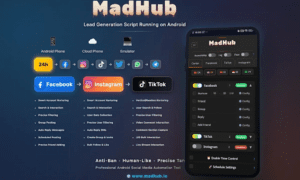A primary care physician sits across from a patient who has just screened positive for depression. It’s clear the patient needs help, but finding that help is another matter entirely. When the doctor pulls up their referral list, it’s either full of outdated contacts or providers who are months out from availability. A next step becomes a dead end.
Primary care doctors are the de facto front line for mental health care in America. Nearly 40% of visits for conditions like depression and anxiety occur in primary care settings, yet two-thirds of physicians say they struggle to connect patients with outpatient mental health services. In the absence of reliable referral pathways, many end up prescribing psychiatric medications themselves, responsible for nearly half of all mental health prescriptions, despite limited training in psychiatry. Patients often wait weeks for help or give up entirely, leading to preventable crisis.
Charles Wong, Enterprise Product Manager at Headway, a mental health technology startup, is trying to fix that. “Doctors are stuck. Their patients are asking for help, and they have nowhere to send them,” Wong says. “That leaves so many without access to quality behavioral care.” His work centers on giving primary care physicians better tools to make referrals that actually result in treatment.
Patients in Limbo
Why is it so difficult for PCPs to refer patients to therapy or psychiatry? One major reason is that physical and behavioral health services in the U.S. have largely operated as separate entities. Primary care clinics and behavioral health providers typically operate on different systems, with little coordination. There’s no shared infrastructure to enable smooth handoffs.
Insurance further complicates things. Many therapists and psychiatrists don’t accept insurance at all, citing low reimbursement rates and burdensome paperwork. Even those who do may have waitlists stretching for months. “In-network” therapists provided by insurance companies can be wildly inaccurate, containing outdated information about retired or unreachable providers. Patients who could benefit from timely therapy or psychiatric consultation often fall through the cracks, sometimes until their condition becomes acute.
The Road to Integration
Experts have long argued that the solution lies in integrating mental health care with primary care. When mental health is addressed alongside physical health, patients are more likely to follow through with their treatment. There’s also a financial argument: The American Psychiatric Association estimates that effective integration of mental and physical health care can reduce overall healthcare costs by 10–15% by decreasing emergency department visits and hospitalizations.
But in practice, few clinics are able to hire on-site therapists or psychiatrists, and until recently, insurance companies weren’t required to reimburse collaborative care models. The idea has gained traction in policy circles, but for most primary care providers, it remains out of reach.
Closing the Referral Loop
Headway is one of several companies working to address this problem by using technology to build a better referral infrastructure, focusing on the point of care.
Wong helped to lead the development of Headway’s referral platform, which connects primary care physicians directly to a vetted network of mental health providers who accept insurance. Most notably, it integrates into the systems doctors already use, such as their electronic health record, so that making a referral doesn’t require learning new software or adding extra steps to an already challenging process. Wong spent months interviewing clinicians and shadowing care teams to understand what goes wrong in the referral process. “We had to really understand the workflow and frustrations of physicians trying to refer,” he explains.
On the back end, Headway’s system reaches out to the patient within one business day to schedule care (compared to the industry average of more than two weeks), and confirms follow-up with the referring doctor. This last piece, closing the feedback loop, is one of the most significant improvements. In many systems, a referral is a one-way ticket: the doctor sends a name and never hears back. With their referral platform, physicians get updates confirming whether their patients got connected, making the process feel less like outsourcing and more like coordinated care.
“Who does the referring can make a massive difference between getting help and struggling alone,” Wong notes.
Toward a More Integrated Future
While tech-driven referral networks are still in their infancy, early results like Headway’s suggest they could significantly narrow the gap between primary care and mental health services. Wong’s pilot program, launched with a small group of providers, saw such strong uptake that it quickly scaled to a national initiative.
He sees this as part of a much larger, and overdue, change. With over 300,000 primary care physicians in the U.S., embedding behavioral health access into these existing relationships could significantly expand mental health treatment. “Primary care is already doing the work of listening, screening, and diagnosing. We just need to make it easier for them to take the next step,” he says.
The U.S. mental health crisis didn’t start with the pandemic, but the surge in demand since then has exposed long-standing structural failures. Insurance reform, better reimbursement policies, and broader public awareness are all part of the solution. But improving referral infrastructure—especially through technology that shortens wait times and closes the loop—may be the most immediate, scalable way to connect patients with care. If these tools continue to gain traction, the experience of seeking therapy could turn from a familiar dead end to a reliable first step.





























